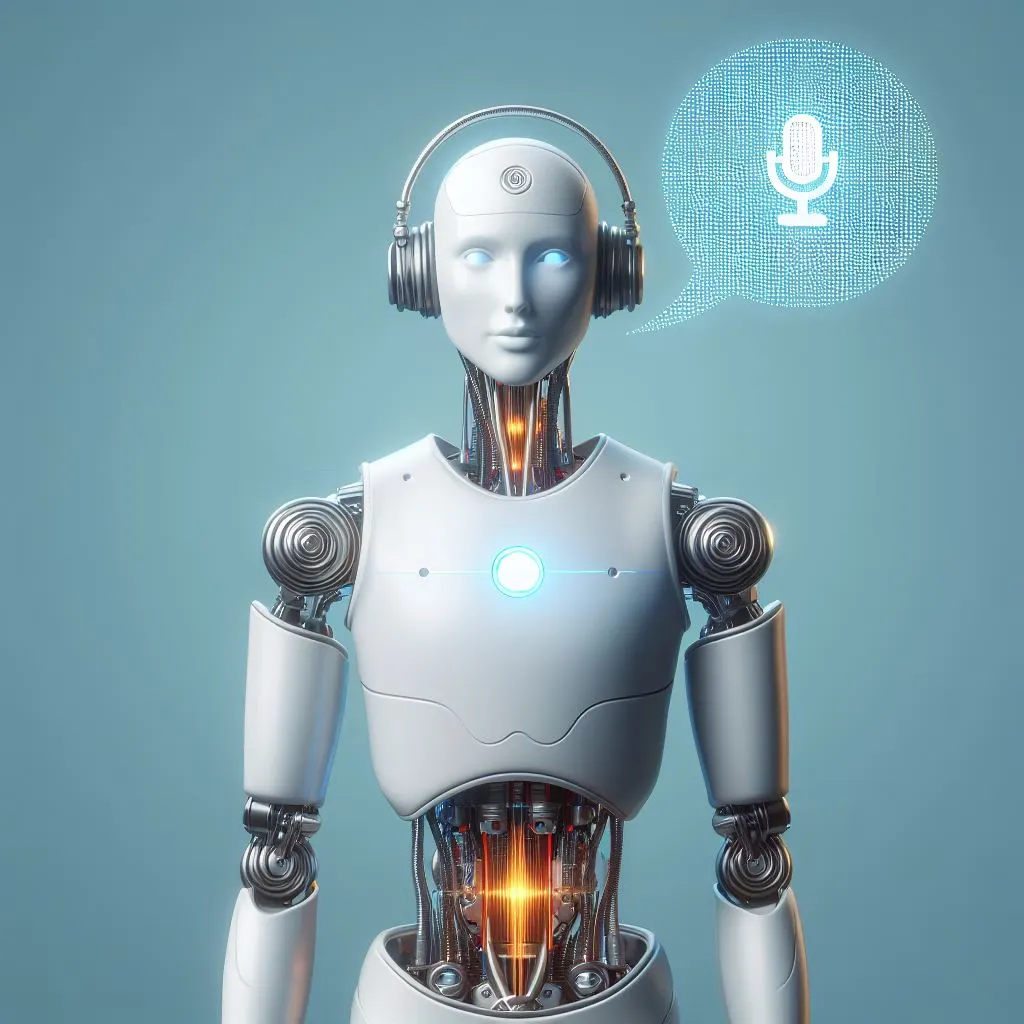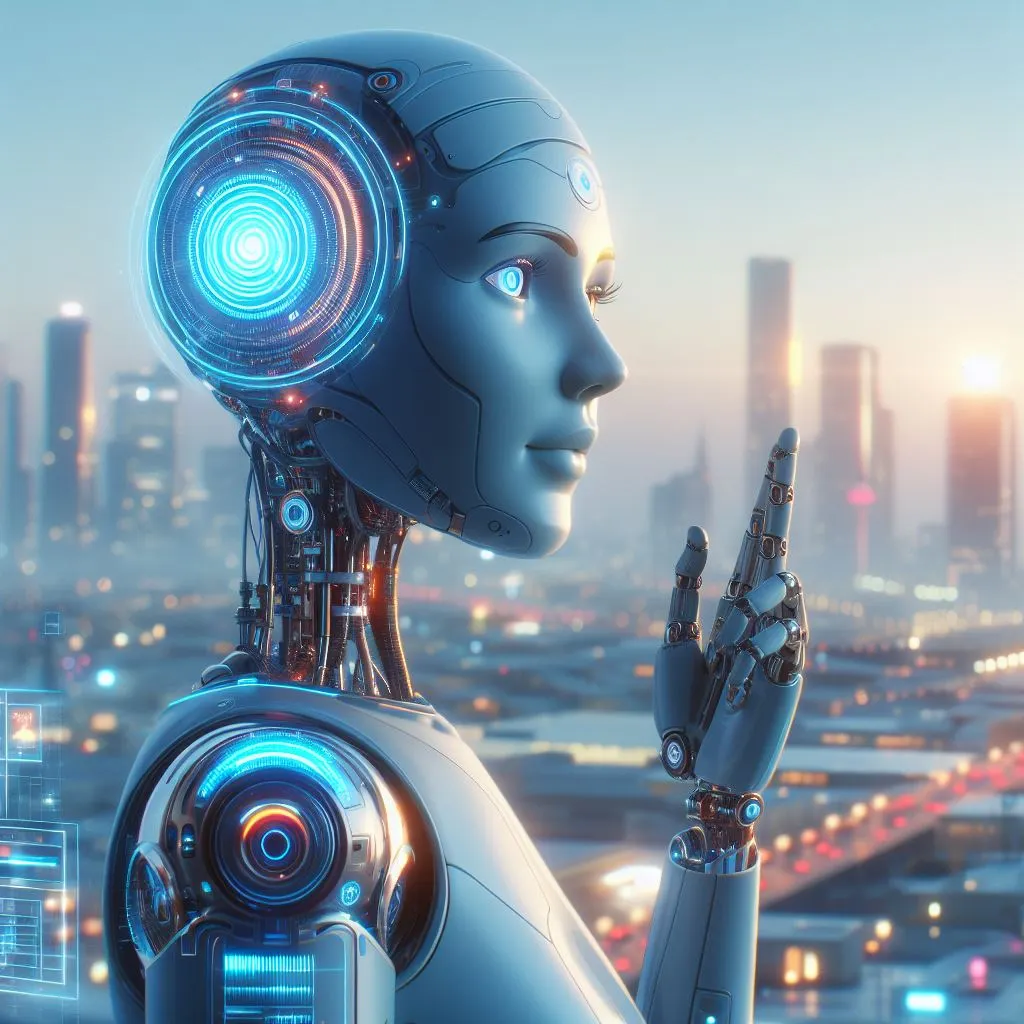A new player has emerged in the ever-evolving landscape of artificial intelligence and robotics, captivating the world with its remarkable capabilities. Figure AI, a leading pioneer in humanoid robotics, has unveiled its flagship creation, the Figure 01 robot, marking a groundbreaking milestone in AI-driven automation and signaling a major leap in its valuation. This technological marvel, infused with the advanced capabilities of OpenAI’s language models, has the potential to redefine the boundaries of human-robot interaction and usher in a new era of intelligent, adaptive, and versatile robotic systems.
Unveiling the Figure AI Technological Breakthrough
Figure AI, a startup founded by a team of renowned experts in the fields of robotics, AI, and engineering, including figures like Brett Adcock, has been steadily gaining momentum in the industry with a valuation poised for a significant funding round. In a recent development, the company secured a staggering $675 million in Series B funding, further propelling its ambitions to push the boundaries of what is possible in the realm of humanoid robotics.
The Figure 01 robot, standing at 5 feet 6 inches tall and weighing 132 pounds, is a testament to the company’s technological prowess. Equipped with a sleek and humanoid design, the robot’s exterior is just the beginning of its remarkable capabilities, highlighting the fusion of form and function in AI robotics. At the heart of Figure 01 lies a sophisticated integration of advanced AI models developed in collaboration with OpenAI and Nvidia, a leading research institute and tech company in artificial intelligence.
Revolutionizing Human-Robot Interaction with Figure AI

The true innovation of Figure 01 lies in its ability to engage in seamless and natural interactions with humans, a feat that sets it apart from conventional humanoid robots, showcasing the potential of AI robotics in enhancing human experience. Leveraging the power of OpenAI’s large language models, the robot boasts the capability to comprehend and respond to spoken language, understand visual cues, and execute tasks with a level of dexterity and adaptability that rivals human performance.
During recent demonstrations, Figure 01 showcased its prowess in natural language processing, effortlessly identifying objects, understanding complex queries, and providing coherent and contextual responses. Unlike traditional robots that rely on pre-programmed instructions, Figure 01 utilizes multi-modal input, amalgamating high-level visual and language intelligence to navigate the world around it, allowing for real-world applications.
The robot’s ability to engage in fluid conversations, describe its visual experiences, plan future actions, and reflect on its own memory and reasoning process is a testament to the remarkable progress in the integration of AI and robotics. This seamless fusion of cognitive capabilities and physical embodiment in AI robotics heralds a new era in human-robot interaction, where machines can seamlessly integrate into our everyday lives and environments.
A Leap Forward in AI Integration by Figure AI

While previous humanoid robots have often been limited to executing pre-programmed tasks or relying on teleoperation, Figure 01 represents a significant leap forward in the integration of artificial intelligence into robotic systems. By harnessing the power of neural networks and advanced AI algorithms, the robot transcends the boundaries of traditional robotics, delving into the realms of reasoning, decision-making, and adaptive learning.
Unlike its predecessors, Figure 01 is not merely a collection of sensors and actuators following a set of instructions. Instead, it is an autonomous entity capable of perceiving its surroundings, understanding the context of a situation, and responding accordingly, embodying the pinnacle of AI robotics innovation. The robot’s ability to describe its visual experiences, plan future actions, and articulate its reasoning verbally sets a new benchmark in the field of humanoid robotics.
This integration of cognitive abilities with physical embodiment is a significant step towards the realization of Artificial General Intelligence (AGI), where machines can demonstrate human-like intelligence and adaptability across a wide range of tasks and domains. The debut of Figure 01 has sparked widespread discussions and comparisons to other AI-driven robotics endeavors, with many highlighting the genuine autonomy and cognitive capabilities of the robot.
Challenging the Status Quo with Figure AI

The unveiling of Figure 01 has challenged the conventional notions of what is possible in the realm of humanoid robotics. Unlike previous demonstrations that often relied on teleoperation or staged scenarios, Figure 01’s ability to engage in nuanced conversations and execute tasks in real-time sets a new standard for the industry.
The robot’s autonomous nature and its capacity to adapt and learn from its interactions with humans are particularly noteworthy. Unlike traditional robots that are limited to pre-programmed responses, Figure 01 demonstrates a level of flexibility and situational awareness that is reminiscent of human intelligence, marking a significant advancement in AI robotics.
This shift in the paradigm of robotics, from pre-programmed machines to adaptive, learning entities, has the potential to reshape numerous industries and applications, especially in addressing the pressing issue of labor shortages. From customer service and healthcare to education and manufacturing, the integration of Figure 01-like robots could revolutionize the way we interact with and utilize automated systems.
Pushing the Boundaries of Robotics with Figure AI
The debut of Figure 01 has not only captivated the public but has also sparked widespread acclaim and discussions within the robotics and AI communities. Comparisons have been drawn to other prominent AI-driven robotics endeavors, but Figure 01 stands out for its genuine autonomy and cognitive capabilities.
Unlike previous demonstrations that often relied on teleoperation or staged scenarios, Figure 01’s ability to engage in nuanced conversations, execute tasks in real-time, and adapt to its environment sets a new benchmark for the industry. The robot’s autonomous nature and capacity to learn and evolve through its interactions with humans are particularly noteworthy, challenging the traditional notions of what is possible in the realm of humanoid robotics.
Ethical Considerations and Challenges Ahead for Figure AI
As the potential of Figure 01 and similar AI-driven robots continues to unfold, it is crucial to address the ethical and societal implications of their widespread adoption. Questions surrounding job displacement, privacy, and the responsible development of these technologies must be carefully considered.
The integration of Figure 01-like robots into various industries and domains raises concerns about the potential impact on human employment, particularly in roles that involve physical labor or customer service. It is essential to ensure that the deployment of such advanced robotic systems in addressing labor shortages is accompanied by comprehensive policies and initiatives to support workforce transition and job retraining.
Additionally, the collection and use of data generated through human-robot interactions in AI robotics raise privacy concerns that must be addressed. Robust data privacy and security measures must be implemented to safeguard sensitive information and maintain public trust in these emerging technologies.
The development of Figure 01 and other AI-driven robots also raises broader questions about the responsible and ethical development of Artificial General Intelligence (AGI), a concern shared by industry leaders like Jeff Bezos. As these systems become increasingly sophisticated and autonomous, the need for robust ethical frameworks and oversight mechanisms becomes paramount to ensure their alignment with human values and the overall well-being of society.
The Future of Human-Robot Collaboration with Figure AI
As Figure 01 and similar advanced robots continue to push the boundaries of what is possible in the realm of humanoid robotics, the future of human-robot collaboration becomes increasingly intriguing. The seamless integration of cognitive capabilities and physical embodiment demonstrated by Figure 01 hints at the potential for a future where humans and robots coexist and work together in unprecedented ways.
One can envision a world where Figure 01-like robots serve as intelligent assistants, collaborating with humans in diverse settings, addressing labor shortages with their advanced capabilities. In healthcare, they could provide personalized care and support, while in education, they could serve as tutors and mentors, adapting their teaching styles to individual needs. In manufacturing and logistics, these robots could work alongside human teams, leveraging their dexterity and adaptability to enhance productivity and efficiency.
Beyond practical applications, the emergence of Figure 01 and other advanced humanoid robots raises deeper questions about the nature of intelligence, consciousness, and the future of human-machine interaction. As these technologies continue to evolve, the line between the mechanical and the organic may blur, leading to a profound re-evaluation of our understanding of intelligence and the role of technology in shaping the human experience.
Conclusion: The Dawn of a New Era with Figure AI
The debut of Figure 01, the groundbreaking humanoid robot developed by Figure AI, marks a significant milestone in the evolution of artificial intelligence and robotics. Powered by the advanced language models of OpenAI and equipped with a remarkable capacity for natural interaction, Figure 01 transcends the limitations of traditional robotics, ushering in a new era of intelligent, adaptive, and versatile automated systems.
As the world witnesses the seamless integration of cognitive capabilities and physical embodiment demonstrated by Figure 01, the possibilities for human-robot collaboration become increasingly captivating. From revolutionizing industries to redefining the nature of intelligence and consciousness, the rise of Figure AI and its cutting-edge creations heralds a future where the boundaries between the mechanical and the organic blur, paving the way for a profound transformation in the way we perceive and interact with technology.
While challenges and ethical considerations undoubtedly lie ahead, the emergence of Figure 01 serves as a testament to the boundless potential of technological innovation in AI robotics. As we continue to push the limits of what is possible, the dawn of a new era in robotics and artificial intelligence beckons, one that promises to reshape our understanding of the world and our place within it.


